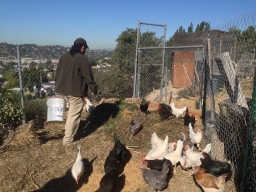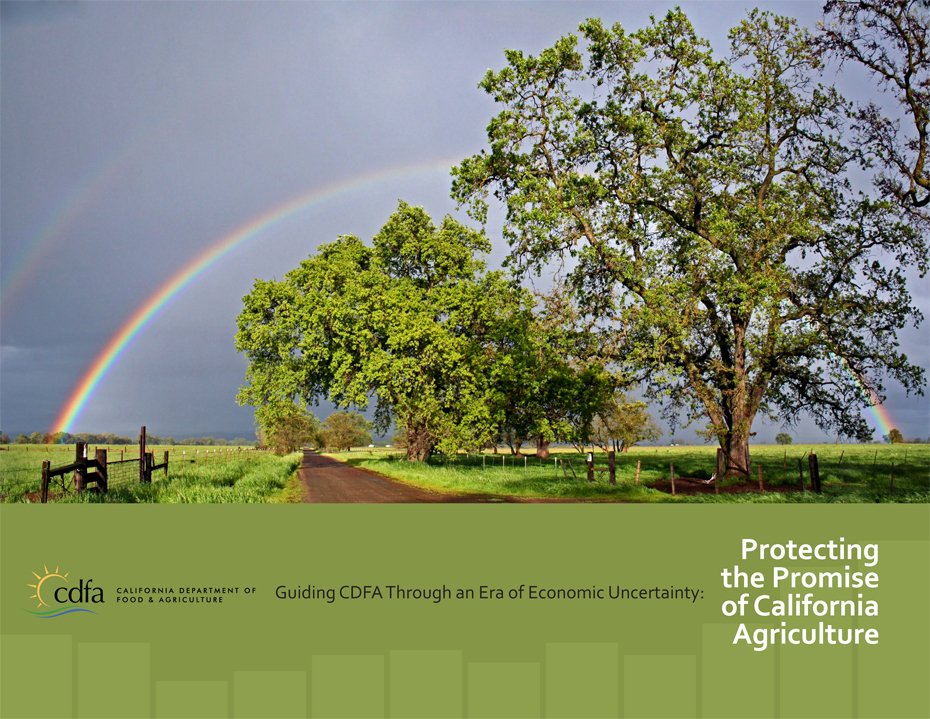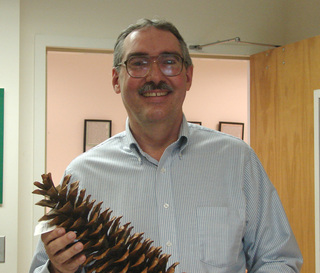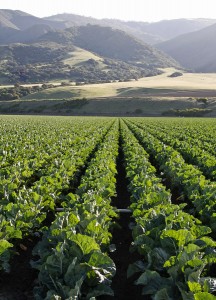A group of graduate students in urban planning at the UCLA Luskin School of Public Affairs has created the first comprehensive picture of urban agriculture in Los Angeles County.
While farming has long been the domain of rural landscapes, increasing interest in the local-food movement, healthy eating and sustainable cities has sparked the growth of farming in urban environments. The new report, “Cultivate L.A.: An Assessment of Urban Agriculture in L.A. County,” is intended to aid city planners as they learn how to accommodate these new land uses in the nation’s most populous county.
Project managers also expect the data to be a useful tool for urban agriculture practitioners and start-up entrepreneurs seeking information about current and future business models and siting opportunities for urban agriculture enterprises. Advocates, such as the Los Angeles Food Policy Council, will use the research to inform efforts to create a more seamless infrastructure and support system for urban agriculture in Los Angeles County’s food ecosystem.
Drawing on public records, personal interviews and sophisticated surveying and validation methods, the researchers produced an interactive map — hosted at cultivatelosangeles.org — detailing the location of every formal urban agriculture site across the county, excluding residential backyard gardens. The map is supplemented by a report, downloadable from the same website, with in-depth analysis, case studies and other resources.
The report includes an appendix that catalogs laws and regulations governing urban agriculture in each of L.A. County’s 88 municipalities. A handy chart that summarizes permitted and prohibited urban agriculture in each city is also available for download from the Cultivate Los Angeles website.
Urban agriculture, as defined in the report, is any undertaking that produces, processes, distributes or sells fruits, vegetables, livestock, floral goods or other materials in urban settings or their immediate surroundings.
“Much of the existing discussion and promotion of urban agriculture has focused on the qualitative benefits and ambitions of the movement,” said Carol Goldstein, a lecturer in urban planning. “We’re thrilled to be able to add some quantitative data to the discussion.”
Goldstein and Stephanie Pincetl, professor and director of the California Center for Sustainable Communities at UCLA’s Institute of the Environment and Sustainability, were co-faculty advisors for the project.
In conducting its research, the group contacted more than 3,000 community organizations, schools, businesses and individuals to establish a baseline understanding of:
- Land use regulations for urban agriculture.
- The spatial distribution of urban agriculture.
- The role of Los Angeles County’s 761 school gardens in educating students about nutrition and sustainability.
- The economics and geography of farmers markets.
- Distribution strategies for urban farmers in Los Angeles County.
Among the group’s findings:
- There are a total of 1,261 verified urban agriculture sites — categorized as school gardens, community gardens and commercial primary growing sites — in Los Angeles County.
- School gardens make up the majority of L.A. County’s urban agriculture activity, with 761 sites. Commercial agricultural operations (nurseries and farms) total 382 sites, and the researchers documented 118 community gardens.
- Among the county’s 88 cities and unincorporated areas, 87 percent regulate animal farming but only 25 percent regulate fruits, vegetables and other flora. Unclear, complex and conflicting regulations were found to constrain agricultural entrepreneurs.
- Definitions for agricultural activities in municipal codes vary widely across the county, making it difficult — if not impossible — for urban farmers to operate in compliance with local health and zoning regulations.
- School gardens present unique opportunities for hands-on learning, combining practical experience in math, science and nutrition with outdoor physical activity. Outdated school district policies should be updated to encourage this type of educational experience.
- L.A. County’s urban farmers travel an average of 13.9 miles to distribute their goods versus the 46.8 mile average traveled by the county’s farmers market vendors.
“The work accomplished by the graduate students is intended as a baseline, one that can be compared with new data in the future,” Pincetl said. “We hope to provide the region with a better understanding of the urban agriculture activities taking place and show how the landscape changes over time.”
The report was part of the graduate students’ capstone project, which matches teams of UCLA Luskin students with client agencies across Los Angeles to tackle community policy issues.
For this project, the students worked with Rachel Surls, sustainable food systems advisor for the University of California Cooperative Extension-Los Angeles County. UCCE, part of the University of California’s Division of Agriculture and Natural Resources, works with home gardeners and commercial agriculture but has only recently begun a coordinated effort to address the needs of urban farmers. Results of the UCLA study will help guide UCCE’s efforts to develop education programs for urban farmers in Los Angeles and around the state.
The interactive map, full report and additional documents are available atcultivatelosangeles.org.








